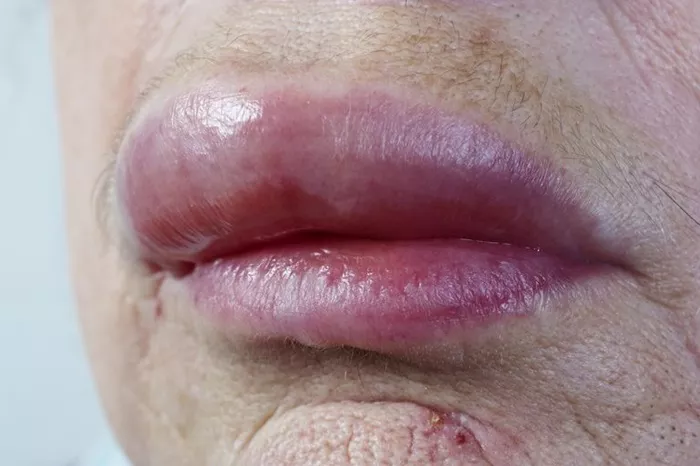Borderline Personality Disorder (BPD) is a complex and often misunderstood mental health condition characterized by unstable relationships, emotions, and self-image. One of the most challenging aspects of BPD is the presence of self-destructive behaviors, which can manifest in various forms, including self-harm, substance abuse, reckless behavior, and suicidal ideation. In this article, we will explore the phenomenon of self-destructive BPD, its causes, symptoms, and treatment options.
Defining Self-Destructive Borderline Personality Disorder
Self-destructive Borderline Personality Disorder refers to the pattern of engaging in behaviors that harm oneself physically, emotionally, or socially. These behaviors are often driven by intense emotional dysregulation, impulsivity, and a distorted sense of self. Individuals with self-destructive BPD may engage in harmful actions as a way to cope with overwhelming emotions, numb emotional pain, or seek relief from feelings of emptiness or abandonment.
Causes and Risk Factors
The exact causes of Borderline Personality Disorder are not fully understood, but a combination of genetic, biological, and environmental factors is believed to contribute to its development. Some of the factors that may increase the risk of developing self-destructive BPD include:
Genetic predisposition: Research suggests that there may be a genetic component to BPD, as individuals with a family history of the disorder are more likely to develop it themselves.
Trauma and childhood adversity: Childhood trauma, such as physical, emotional, or sexual abuse, neglect, or loss of a caregiver, is a significant risk factor for BPD. Traumatic experiences during childhood can disrupt normal emotional development and lead to difficulties in regulating emotions and forming stable relationships.
Neurobiological factors: Imbalances in neurotransmitters, such as serotonin and dopamine, have been implicated in BPD. These imbalances can affect mood regulation, impulse control, and emotional processing, contributing to self-destructive behaviors.
Environmental triggers: Stressful life events, such as relationship conflicts, job loss, financial problems, or major life transitions, can exacerbate symptoms of BPD and trigger self-destructive behaviors.
Symptoms of Self-Destructive Borderline Personality Disorder
The symptoms of self-destructive Borderline Personality Disorder can vary in severity and may fluctuate over time. Some common symptoms include:
Impulsive behaviors: Individuals with self-destructive BPD may engage in reckless behaviors such as substance abuse, binge eating, reckless driving, or unprotected sex without considering the consequences.
Self-harm: Self-harming behaviors, such as cutting, burning, or hitting oneself, are common among individuals with BPD. These behaviors are often a way to cope with intense emotional distress or to feel a sense of control over overwhelming emotions.
Suicidal ideation: Thoughts of self-harm or suicide are prevalent in individuals with self-destructive BPD. They may feel hopeless, trapped, or overwhelmed by emotional pain and may express a desire to end their lives as a way to escape their suffering.
Emotional instability: Mood swings, intense and rapid shifts in emotions, and difficulty regulating emotions are hallmark symptoms of BPD. Individuals with self-destructive BPD may experience intense feelings of anger, sadness, anxiety, or shame, which can contribute to self-destructive behaviors.
Impaired self-image: Individuals with BPD often have a distorted or unstable sense of self, which can lead to feelings of emptiness, worthlessness, or identity confusion. They may engage in self-destructive behaviors as a way to validate their sense of self or to numb feelings of inadequacy.
Interpersonal difficulties: Unstable and turbulent relationships are common among individuals with BPD. They may have difficulty trusting others, fear abandonment, and engage in intense and volatile relationships characterized by idealization and devaluation.
Diagnosis and Treatment
Diagnosing self-destructive Borderline Personality Disorder can be challenging due to the overlap of symptoms with other mental health conditions. A thorough psychological evaluation and assessment of symptoms are essential for an accurate diagnosis.
Treatment for self-destructive BPD typically involves a combination of psychotherapy, medication, and support from mental health professionals. Some common treatment approaches include:
Dialectical Behavior Therapy (DBT): DBT is a specialized form of psychotherapy that focuses on teaching individuals with BPD skills for emotion regulation, distress tolerance, interpersonal effectiveness, and mindfulness. DBT has been shown to be effective in reducing self-destructive behaviors and improving overall functioning in individuals with BPD.
Cognitive-Behavioral Therapy (CBT): CBT helps individuals identify and challenge negative thought patterns and behaviors that contribute to self-destructive tendencies. By learning new coping strategies and developing more adaptive ways of thinking, individuals with BPD can reduce their reliance on self-destructive behaviors.
Medication: While there are no medications specifically approved for treating BPD, certain medications may be prescribed to target specific symptoms, such as depression, anxiety, or impulsivity. Antidepressants, mood stabilizers, and antipsychotic medications may be used in conjunction with psychotherapy to manage symptoms effectively.
Supportive therapy: Individual and group therapy can provide a safe and supportive environment for individuals with self-destructive BPD to explore their emotions, learn coping skills, and connect with others who share similar experiences. Peer support groups and online communities can also offer valuable support and encouragement.
Lifestyle modifications: Adopting healthy lifestyle habits, such as regular exercise, balanced nutrition, adequate sleep, and stress management techniques, can help individuals with self-destructive BPD improve their overall well-being and reduce the frequency and severity of self-destructive behaviors.
Conclusion
Self-destructive Borderline Personality Disorder poses significant challenges for those affected, as well as their loved ones and caregivers. However, with early intervention, appropriate treatment, and ongoing support, individuals with self-destructive BPD can learn to manage their symptoms effectively and lead fulfilling lives. By raising awareness, reducing stigma, and promoting empathy and understanding, we can create a more compassionate and supportive environment for individuals living with BPD.
[inline_related_posts title=”You Might Be Interested In” title_align=”left” style=”list” number=”6″ align=”none” ids=”8948,8945,8942″ by=”categories” orderby=”rand” order=”DESC” hide_thumb=”no” thumb_right=”no” views=”no” date=”yes” grid_columns=”2″ post_type=”” tax=””]
































